The refresh rate is the number of frames per second your monitor can display. Hertz frequency is used as the measurement at which the screen is redrawn. 1Hz means it can draw 1 image per second. A high-frequency rate allows getting a clearer visibility and lesser strain on your eyes. In this article, we will review two methods which you can use to change the screen refresh rate in Windows 10, using the GUI, and with a command line tool.
Advertisеment
Traditionally, a refresh rate of 60Hz is considered to be the optimal screen refresh rate. That was meant to be the best refresh rate for human eyes. Many modern displays which are designed for games and professionals support a higher screen refresh rate of 144Hz or even 240Hz to provide a sharper and smoother viewing experience.
A combination of the monitor, and graphics card you have connected to your computer provide a variety of display resolutions, most of these allow adjusting the screen refresh rate.
In previous versions of Windows you could use the classic Control Panel. The Display option could be used to change parameters for connected monitors. This has changed with recent Windows 10 versions. The Display options were moved to the modern Settings app.
To change display refresh rate in Windows 10,
- Open the Settings app.
- Go to System -> Display.
- On the right, click on the Advanced display settings link.
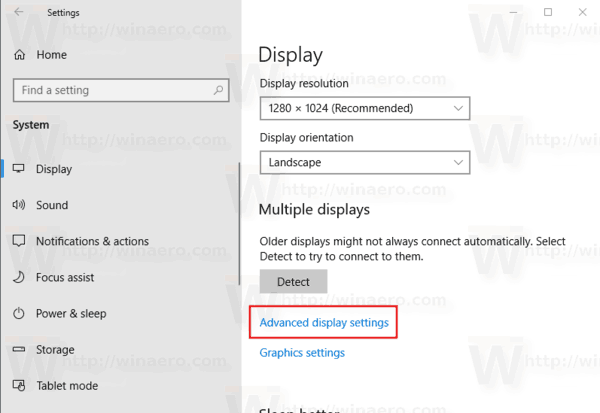
- On the next page, click the link Display adapter properties.
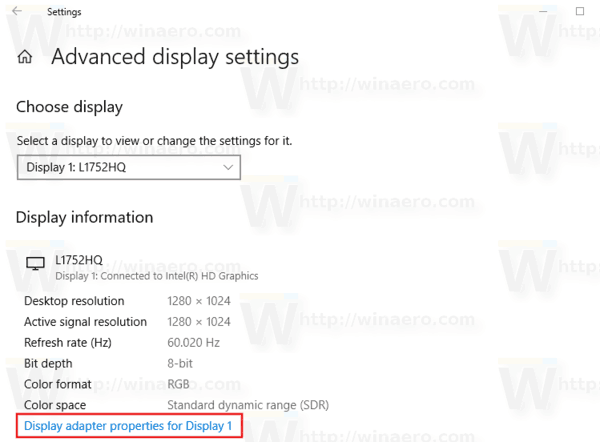
- On the Monitor tab, select a Screen refresh rate in the drop down list.
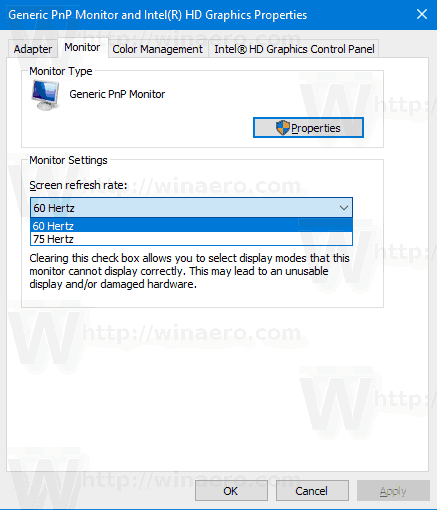
- Alternatively, you can select a display mode with screen refresh rate. On the Adapter tab, click on the button List All Modes.
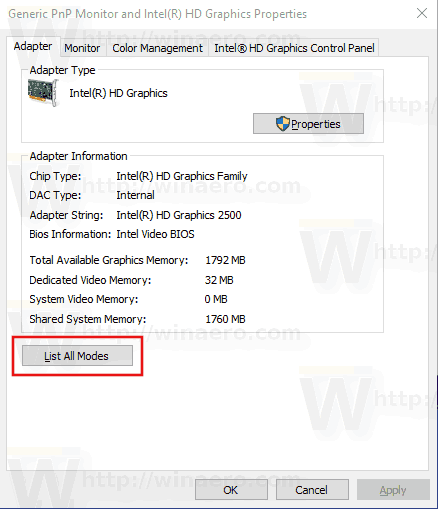
- Select a suitable display resolution that comes with the desired screen refresh rate, and click OK.
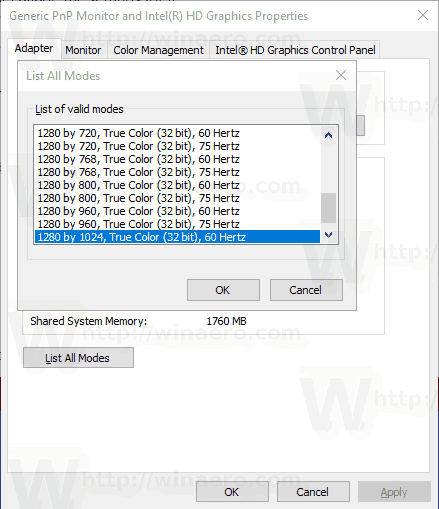
You are done.
Tip: Starting with May 2019 Update, Windows 10 comes with support for the variable refresh rate feature. The appropriate options can be found in Settings. See the following post: Windows 10 Version 1903 Supports Variable Refresh Rate.
Also, it is possible to change the screen refresh rate from the command line. Windows 10 doesn't include built-in tools for this task, so we have to use QRes - a tiny open source app.
QRes is a small application that allows changing screen mode with command line arguments. It can change color depth, screen resolution, and the refresh rate. The core application qres.exe is a small (32 kB) executable file.
Change Display Refresh Rate in Windows 10 from Command Prompt
- Download Qres from HERE.
- Extract the archive contents to a convenient folder, e.g. c:\apps\qres.
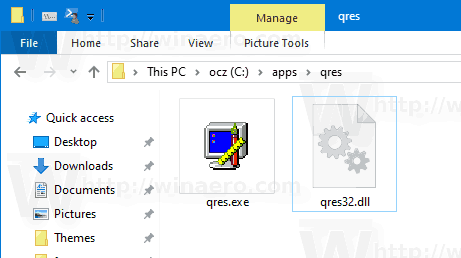
- Unblock the files.
- Open a new command prompt in the destination folder.
- Type the command:
qres f=60to set the screen refresh rate to 60Hz. Replace 60 with the desired value supported by your display.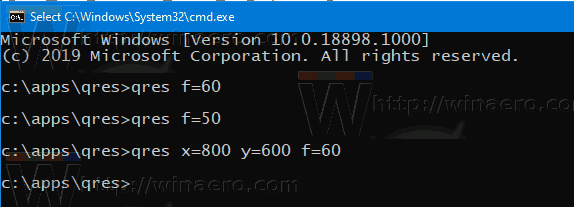
- Finally, you can use qres to change screen resolution, by running a command like this
qres x=800 y=600 f=75. This will set the 800x600 resolution and the 75Hz refresh rate.
So, with QRes you can create a shortcut to change your screen resolution and/or its refresh rate, or use it in a batch file for various automation scenarios.
That's it.
Support us
Winaero greatly relies on your support. You can help the site keep bringing you interesting and useful content and software by using these options:
If you like this article, please share it using the buttons below. It won't take a lot from you, but it will help us grow. Thanks for your support!
Advertisеment
